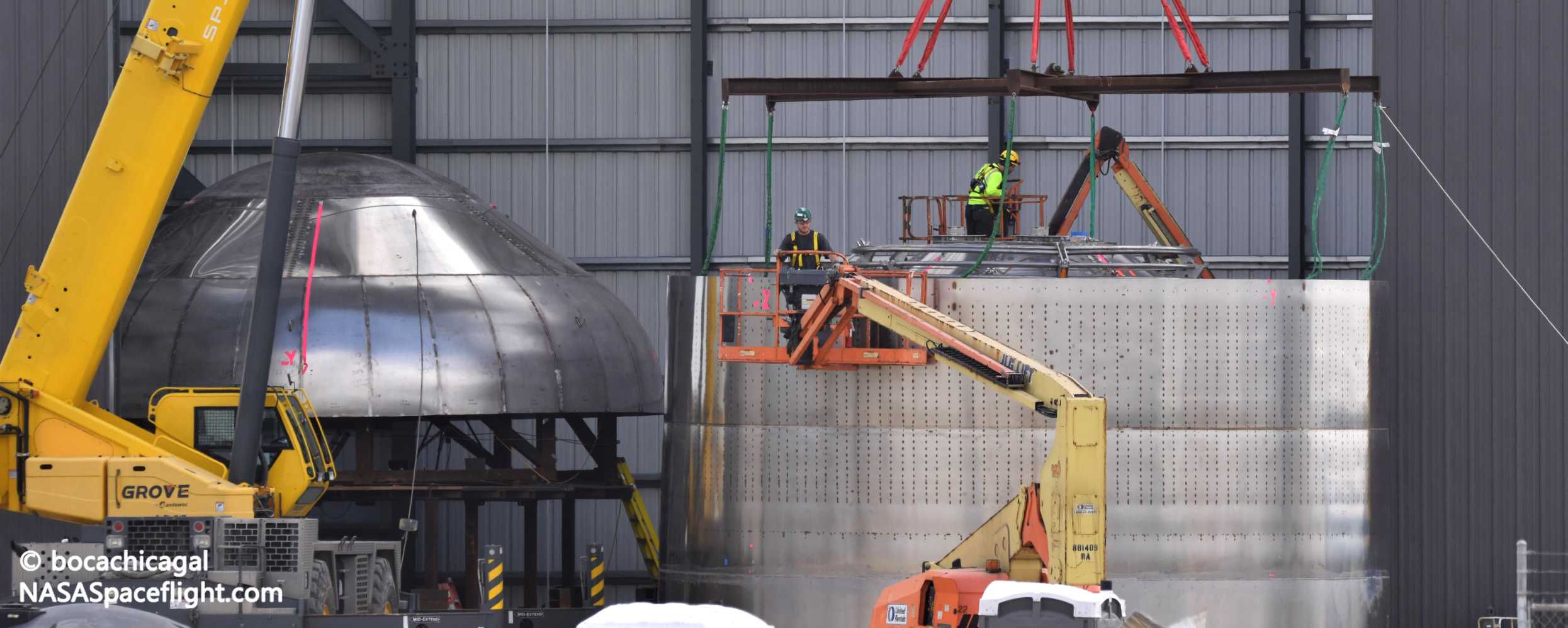
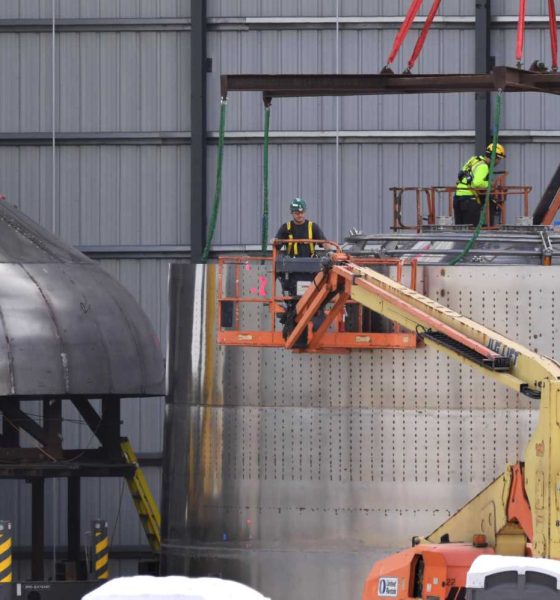
News
SpaceX shrugs off Starship implosion and gets back to work as Elon Musk talks next steps
SpaceX has shrugged off the catastrophic implosion of its first serial Starship prototype (SN01) and begun stacking sections of the next ship (SN02) while CEO Elon Musk talks next steps for the next-generation rocket program.
By now, it’s reasonably clear that the demise of Starship SN01’s tank and engine section came as a bit of surprise to SpaceX itself, while it assuredly shocked non-employees and local residents who happened to be watching on eve of the anomaly. CEO Elon Musk himself appears to have expected different results, noting that – thankfully – the likely source of the Starship’s unforeseen failure had already been determined.
Despite the apparent setback, it appears that SpaceX won’t have to wait long at all to continue its uniquely ‘hardware-rich’ Starship test campaign. With a workforce now several hundred strong and a great deal of hands-on and strategic experience gained from building Starships Mk1 and SN01, SpaceX is now practically churning out parts for future Starship SNxx prototypes. Most notably, Starship SN01’s predecessor is potentially just a few days away from being stacked into a finished tank section, hinting at the almost unfathomably speed that SpaceX is able to build full-scale vehicles even in early days of the program.
Three days after Starship SN01’s spectacular implosion and unintentional ‘launch’, SpaceX CEO Elon Musk took to Twitter to share a video captured by local Boca Chica Village resident ‘bocachicagal’ and posted by NASASpaceflight.com. Attached above, Mary’s video offers an incredibly vivid view of the rocket’s violent demise while further revealing the apparent location where the failure started – Starship SN01’s engine section and thrust structure.
Confirming suspicions, Musk quickly implied that the Starship’s failure originated in or around its thrust structure (‘thrust puck’), further noting that Starship SN02 – already in the middle of production – would be “stripp[ed]…to [the] bare minimum to test the thrust puck to dome weld.” In essence, it sounds like Starship SN02 will become SpaceX’s third intentional “test tank”, following in the footsteps of two small Starship tanks built and pressurized to failure to verify the quality of Starship manufacturing.
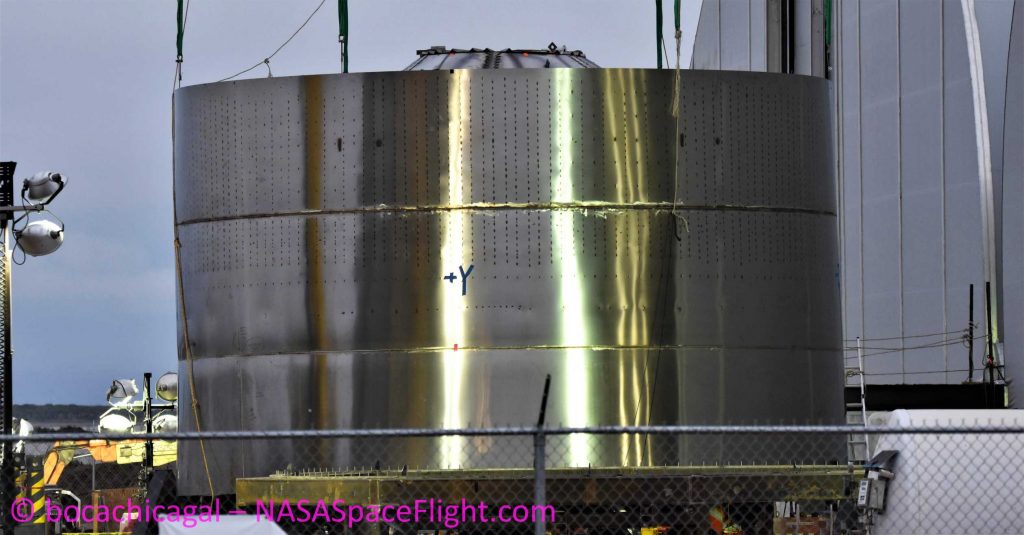
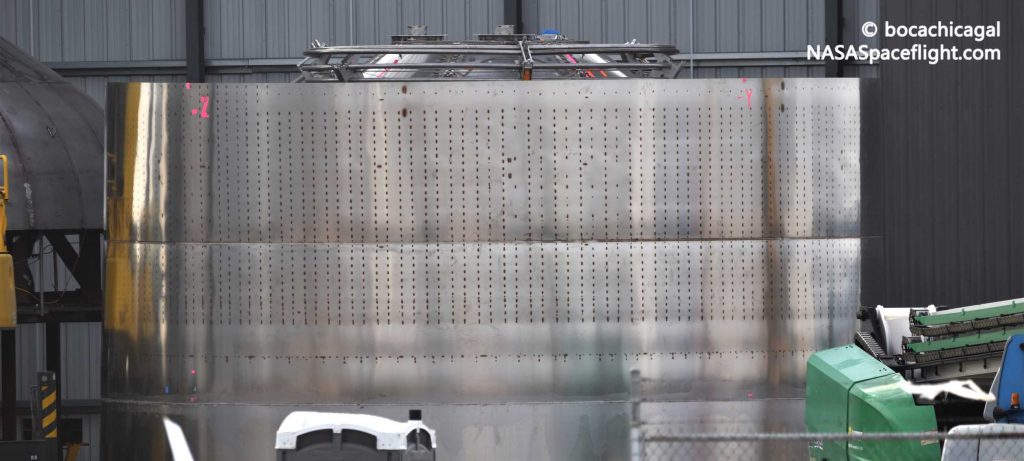
Starship SN02’s thrust structure design already appears to be a departure from SN01’s apparently unsuccessful iteration. Given that it was already partially completed before Starship SN01 failed during testing, it’s possible that SpaceX will attempt to reinforce the SN02 thrust structure, but the company may have already implemented upgrades before its engineers had the benefit of hindsight from February 28th’s test.
Regardless of what happens to Starship SN02, the fact that SpaceX is apparently building full-scale, (mostly) functional Starship tank sections from raw materials to the launch pad in a matter of a few weeks is incredibly encouraging for the next-generation rocket development program. As an external observer, it’s certainly disappointing to see an impressive piece of rocket hardware shredded in an evening after weeks of work, but that speed – and SpaceX’s willingness to accept failures at the scale of SN01 – suggests that each prototype is almost unfathomably cheap. Unofficial estimates peg the cost of SN01-like Starship prototypes at just several million dollars apiece, while the cost of the raw steel itself is so low that it might as well be negligible.
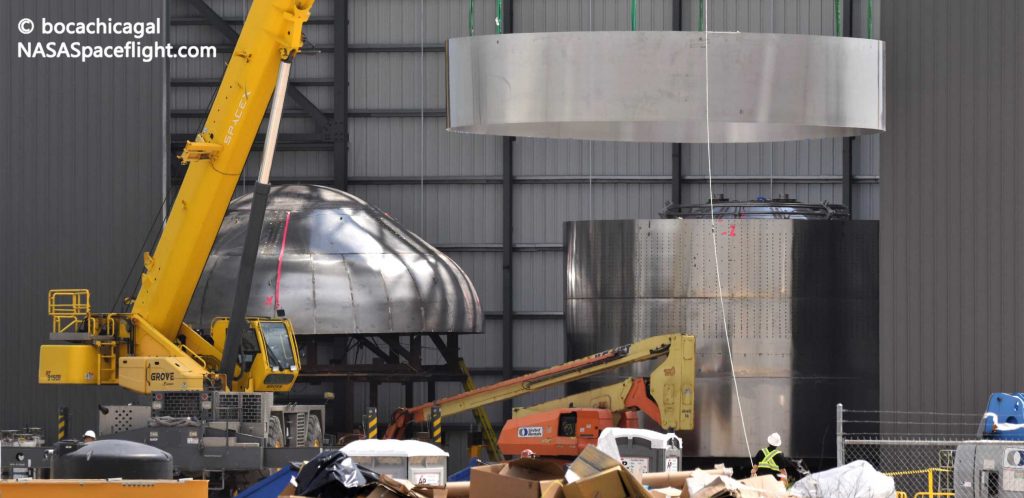
Even if it takes SpaceX 5-10 SN01-class failures to mature its South Texas rocket factory into a reliable machine and get to a point of stability and confidence with suborbital Starship flights, the total cost of that trial and error is comically insignificant relative to almost any other rocket development program in history. To be clear, SpaceX might benefit from going a little slower and refining Starship’s prototype design, but it’s impossible to know from an armchair. For now, the best available advice is to simply enjoy the show and view each potential test failure as just another small step along the path to Mars.
Check out Teslarati’s Marketplace! We offer Tesla accessories, including for the Tesla Cybertruck and Tesla Model 3.

News
Tesla aims to combat common Full Self-Driving problem with new patent
Tesla writes in the patent that its autonomous and semi-autonomous vehicles are heavily reliant on camera systems to navigate and interact with their environment.

Tesla is aiming to combat a common Full Self-Driving problem with a new patent.
One issue with Tesla’s vision-based approach is that sunlight glare can become a troublesome element of everyday travel. Full Self-Driving is certainly an amazing technology, but there are still things Tesla is aiming to figure out with its development.
Unfortunately, it is extremely difficult to get around this issue, and even humans need ways to combat it when they’re driving, as we commonly use sunglasses or sun visors to give us better visibility.
Cameras obviously do not have these ways to fight sunglare, but a new patent Tesla recently had published aims to fight this through a “glare shield.”
Tesla writes in the patent that its autonomous and semi-autonomous vehicles are heavily reliant on camera systems to navigate and interact with their environment.

The ability to see surroundings is crucial for accurate performance, and glare is one element of interference that has yet to be confronted.
Tesla described the patent, which will utilize “a textured surface composed of an array of micro-cones, or cone-shaped formations, which serve to scatter incident light in various directions, thereby reducing glare and improving camera vision.”

The patent was first spotted by Not a Tesla App.
The design of the micro-cones is the first element of the puzzle to fight the excess glare. The patent says they are “optimized in size, angle, and orientation to minimize Total Hemispherical Reflectance (THR) and reflection penalty, enhancing the camera’s ability to accurately interpret visual data.”
Additionally, there is an electromechanical system for dynamic orientation adjustment, which will allow the micro-cones to move based on the angle of external light sources.
This is not the only thing Tesla is mulling to resolve issues with sunlight glare, as it has also worked on two other ways to combat the problem. One thing the company has discussed is a direct photon count.
CEO Elon Musk said during the Q2 Earnings Call:
“We use an approach which is direct photon count. When you see a processed image, so the image that goes from the sort of photon counter — the silicon photon counter — that then goes through a digital signal processor or image signal processor, that’s normally what happens. And then the image that you see looks all washed out, because if you point the camera at the sun, the post-processing of the photon counting washes things out.”
Future Hardware iterations, like Hardware 5 and Hardware 6, could also integrate better solutions for the sunglare issue, such as neutral density filters or heated lenses, aiming to solve glare more effectively.
Elon Musk
Delaware Supreme Court reinstates Elon Musk’s 2018 Tesla CEO pay package
The unanimous decision criticized the prior total rescission as “improper and inequitable,” arguing that it left Musk uncompensated for six years of transformative leadership at Tesla.

The Delaware Supreme Court has overturned a lower court ruling, reinstating Elon Musk’s 2018 compensation package originally valued at $56 billion but now worth approximately $139 billion due to Tesla’s soaring stock price.
The unanimous decision criticized the prior total rescission as “improper and inequitable,” arguing that it left Musk uncompensated for six years of transformative leadership at Tesla. Musk quickly celebrated the outcome on X, stating that he felt “vindicated.” He also shared his gratitude to TSLA shareholders.
Delaware Supreme Court makes a decision
In a 49-page ruling Friday, the Delaware Supreme Court reversed Chancellor Kathaleen McCormick’s 2024 decision that voided the 2018 package over alleged board conflicts and inadequate shareholder disclosures. The high court acknowledged varying views on liability but agreed rescission was excessive, stating it “leaves Musk uncompensated for his time and efforts over a period of six years.”
The 2018 plan granted Musk options on about 304 million shares upon hitting aggressive milestones, all of which were achieved ahead of time. Shareholders overwhelmingly approved it initially in 2018 and ratified it once again in 2024 after the Delaware lower court struck it down. The case against Musk’s 2018 pay package was filed by plaintiff Richard Tornetta, who held just nine shares when the compensation plan was approved.
A hard-fought victory
As noted in a Reuters report, Tesla’s win avoids a potential $26 billion earnings hit from replacing the award at current prices. Tesla, now Texas-incorporated, had hedged with interim plans, including a November 2025 shareholder-approved package potentially worth $878 billion tied to Robotaxi and Optimus goals and other extremely aggressive operational milestones.
The saga surrounding Elon Musk’s 2018 pay package ultimately damaged Delaware’s corporate appeal, prompting a number of high-profile firms, such as Dropbox, Roblox, Trade Desk, and Coinbase, to follow Tesla’s exodus out of the state. What added more fuel to the issue was the fact that Tornetta’s legal team, following the lower court’s 2024 decision, demanded a fee request of more than $5.1 billion worth of TSLA stock, which was equal to an hourly rate of over $200,000.
Delaware Supreme Court Elon Musk 2018 Pay Package by Simon Alvarez
News
Tesla Cybercab tests are going on overdrive with production-ready units
Tesla is ramping its real-world tests of the Cybercab, with multiple sightings of the vehicle being reported across social media this week.

Tesla is ramping its real-world tests of the Cybercab, with multiple sightings of the autonomous two-seater being reported across social media this week. Based on videos of the vehicle that have been shared online, it appears that Cybercab tests are underway across multiple states.
Recent Cybercab sightings
Reports of Cybercab tests have ramped this week, with a vehicle that looked like a production-ready prototype being spotted at Apple’s Visitor Center in California. The vehicle in this sighting was interesting as it was equipped with a steering wheel. The vehicle also featured some changes to the design of its brake lights.
The Cybercab was also filmed testing at the Fremont factory’s test track, which also seemed to involve a vehicle that looked production-ready. This also seemed to be the case for a Cybercab that was spotted in Austin, Texas, which happened to be undergoing real-world tests. Overall, these sightings suggest that Cybercab testing is fully underway, and the vehicle is really moving towards production.
Production design all but finalized?
Recently, a near-production-ready Cybercab was showcased at Tesla’s Santana Row showroom in San Jose. The vehicle was equipped with frameless windows, dual windshield wipers, powered butterfly door struts, an extended front splitter, an updated lightbar, new wheel covers, and a license plate bracket. Interior updates include redesigned dash/door panels, refined seats with center cupholders, updated carpet, and what appeared to be improved legroom.
There seems to be a pretty good chance that the Cybercab’s design has been all but finalized, at least considering Elon Musk’s comments at the 2025 Annual Shareholder Meeting. During the event, Musk confirmed that the vehicle will enter production around April 2026, and its production targets will be quite ambitious.








